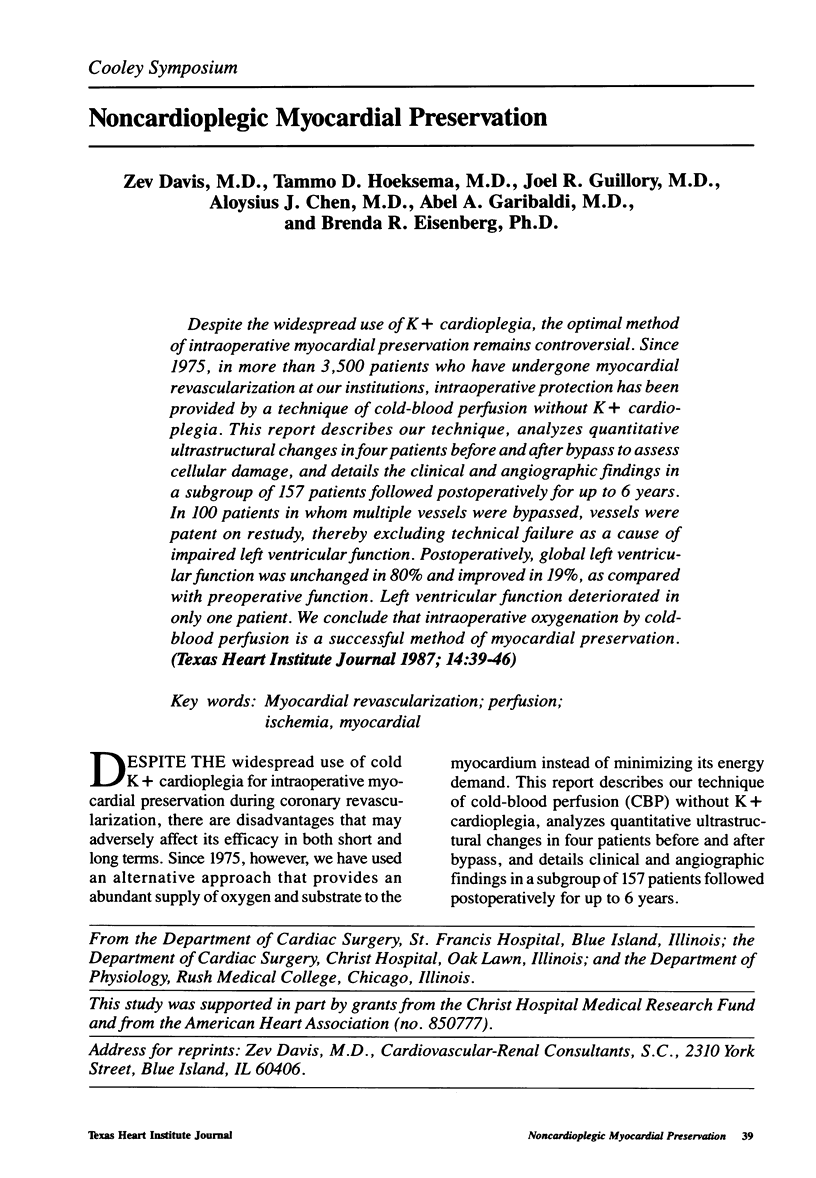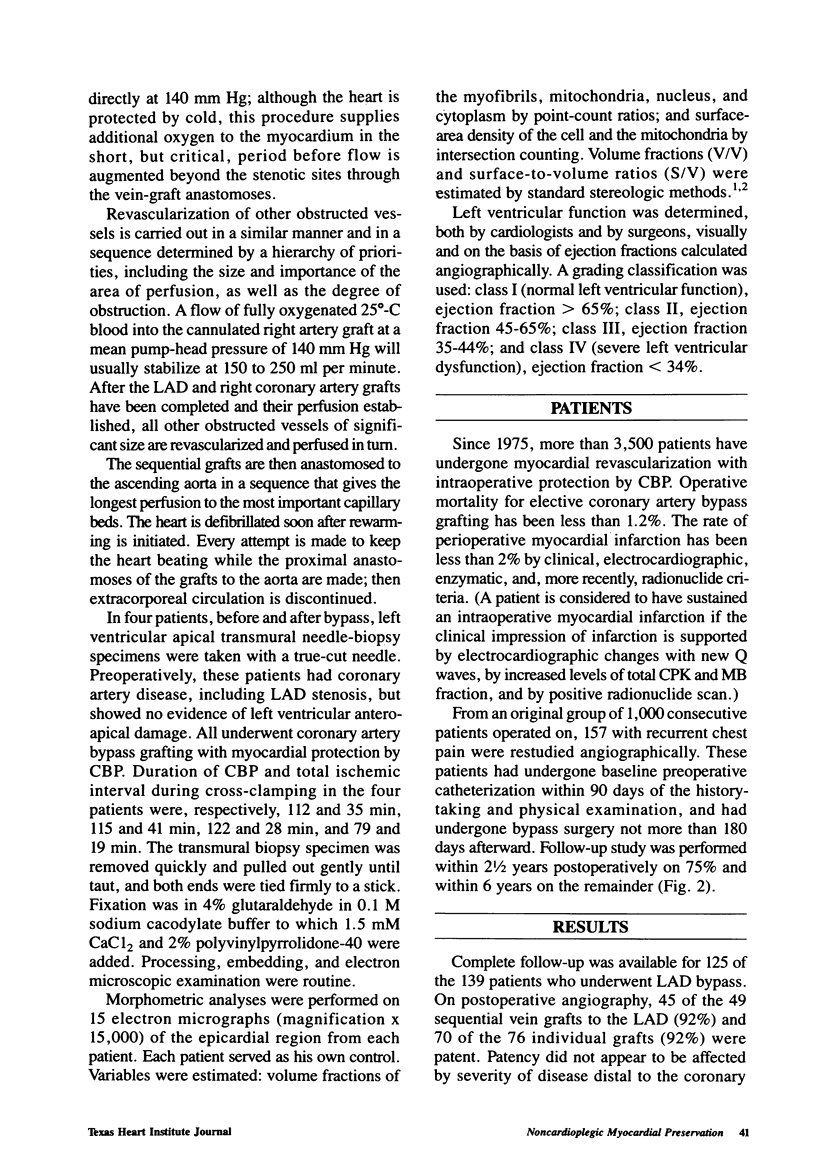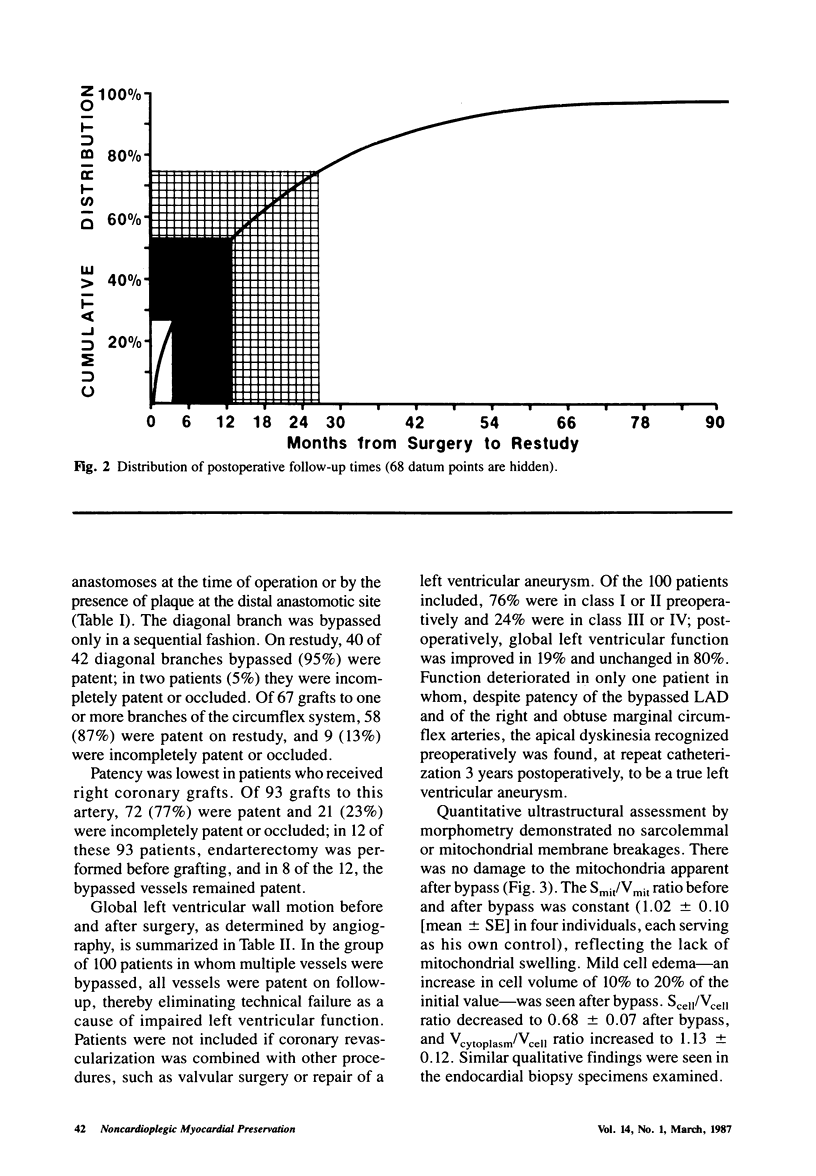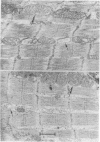Abstract
Despite the widespread use of K + cardioplegia, the optimal method of intraoperative myocardial preservation remains controversial. Since 1975, in more than 3,500 patients who have undergone myocardial revascularization at our institutions, intraoperative protection has been provided by a technique of cold-blood perfusion without K + cardioplegia. This report describes our technique, analyzes quantitative ultrastructural changes in four patients before and after bypass to assess cellular damage, and details the clinical and angiographic findings in a subgroup of 157 patients followed postoperatively for up to 6 years. In 100 patients in whom multiple vessels were bypassed, vessels were patent on restudy, thereby excluding technical failure as a cause of impaired left ventricular function. Postoperatively, global left ventricular function was unchanged in 80% and improved in 19%, as compared with preoperative function. Left ventricular function deteriorated in only one patient. We conclude that intraoperative oxygenation by cold-blood perfusion is a successful method of myocardial preservation. (Texas Heart Institute Journal 1987; 14:39-46)
Keywords: Myocardial revascularization
Keywords: perfusion
Keywords: ischemia, myocardial
Full text
PDF










